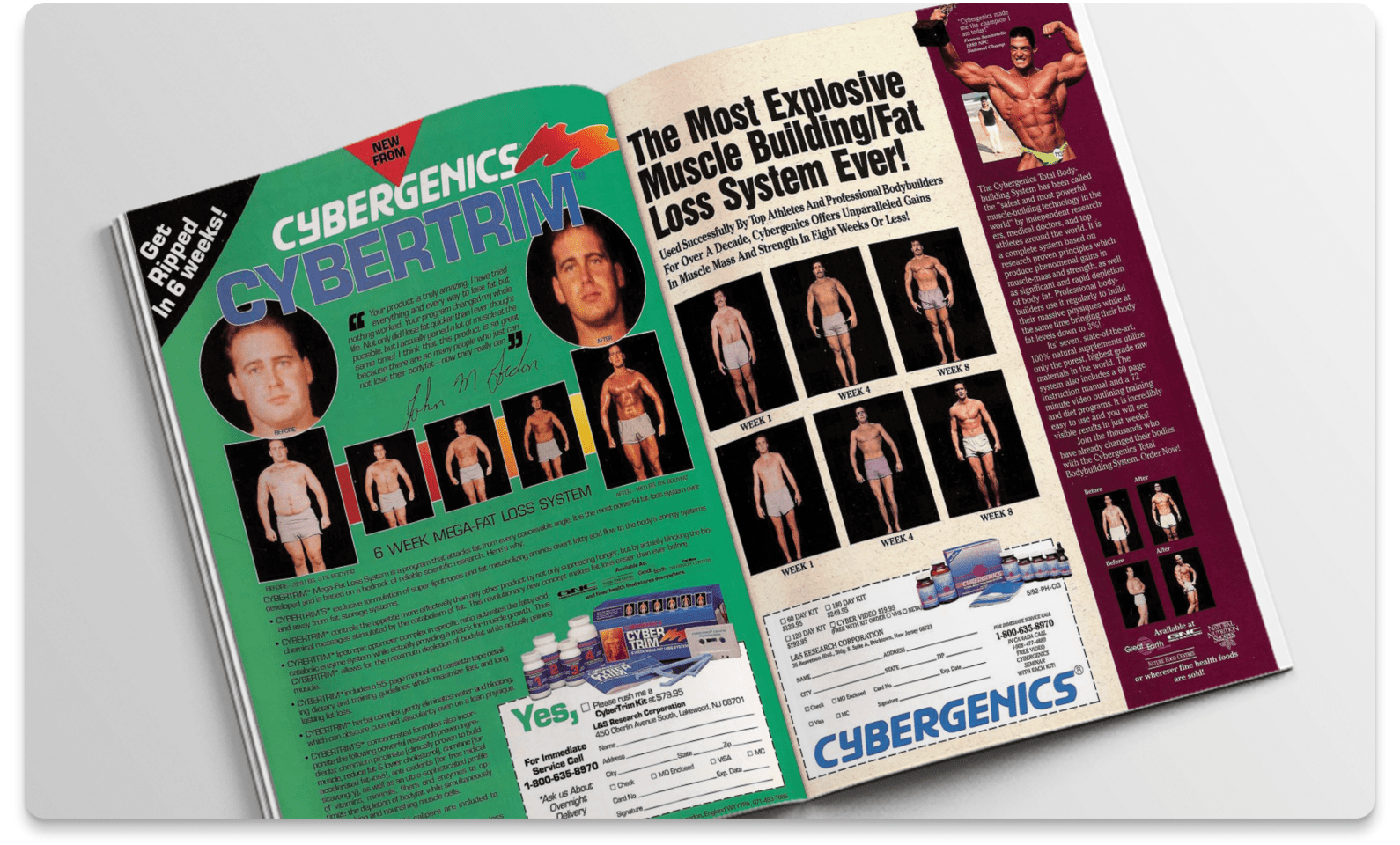Before and after photos are a staple in health and fitness. They’ve been used to market new programs, document physical changes, and celebrate progress. But some say they trigger negative feelings about body image and feed a cultural obsession with thinness. In this article we’ll explore both sides and leave you with best practices for using them, if you choose to.
++++
Precision Nutrition has used before and after photos since the early days of our company. (Back then we kept them in actual binders. We’ve since upgraded.)
These images of our men’s and women’s clients showcase the amazing weight loss and body composition changes that can happen with excellent coaching.
Recently, however, transformation photos have gotten controversial.
We’ve seen it on our own channels as well as in those of other nutrition and fitness companies, influencers, and social media outlets.
Comments on these kinds of photos range from:
Wow, that person made amazing progress. That’s so inspiring!
To…
These are triggering for people with a history of disordered eating, trauma, and body image issues.
And even…
When will the fitness industry stop fixating on weight loss and promoting diet culture?! What about the transformation that’s happening INSIDE?
All of these reactions are reasonable.
In fact, let’s just get one thing out of the way:
All emotional responses to before and after photos are valid.
No, really. That’s not a cop out. It’s true.
You feel how you feel — inspired, incensed, or somewhere in between.
But now more than ever, viewpoints are expanding.
That’s because of the rise of strong voices who aren’t willing to accept the body expectations imposed on them, who question thinness as a virtue.
By examining what “health and fitness” means, people are starting to ask:
- Is losing weight the only way to become fit and healthy?
- Does looking sexier always mean looking leaner?
- Can’t I love my body without “transforming” it?
These are good questions.
To evolve as an industry and reach as many people as possible, we need to ask them. But do we want to stop using before and after photos completely?
The answer is complicated.
The truth is, some people DO want to lose weight. Others don’t.
Some people ARE triggered negatively by seeing before and after photos. Others find them empowering.
It IS frustrating when physical attributes are coveted over health. But some people DO want to see their bodies transform.
Whether you want to make body changes yourself, or you’re a health and fitness pro who works with clients, you’re going to be confronted with the complicated body politics of transformation photos.
Will you use photos to document your own progress?
Will you ask your clients to use them?
If so, will they be used only to track physical progress? For marketing? Or both?
And, whatever you decide, how will you explain your rationale?
If you’re a coach, being able to answer these questions will help define your brand and help you better support your clients.
If you’re on your own health journey, knowing how (and if) you want to use transformation photos will help you use them in a more effective, authentic, and empowering way.
In order to navigate this complex topic, let’s explore:
- How did before and after photos become so popular?
- Why are they controversial in today’s cultural climate?
- What are the drawbacks and benefits of using photos on their own?
- What are the drawbacks and benefits of using photos for marketing?
- What other ways can we use visual representation to measure progress?
- How can you decide if before and afters are right for you and your clients?
++++
The beginning of before and after photos.
There’s probably no easily identified source of the before and after photo as we know it today. But the first time I remember seeing before and after physique photos was in muscle-building and fat loss supplement advertisements in the late 1980s.
As these advertisements appeared in trade magazines and sports nutrition retailers, their reach was limited.
However, Bill Phillips took the transformation photo to a new level in the 90s with his EAS Spokesperson Challenges and the publication of Body For Life.
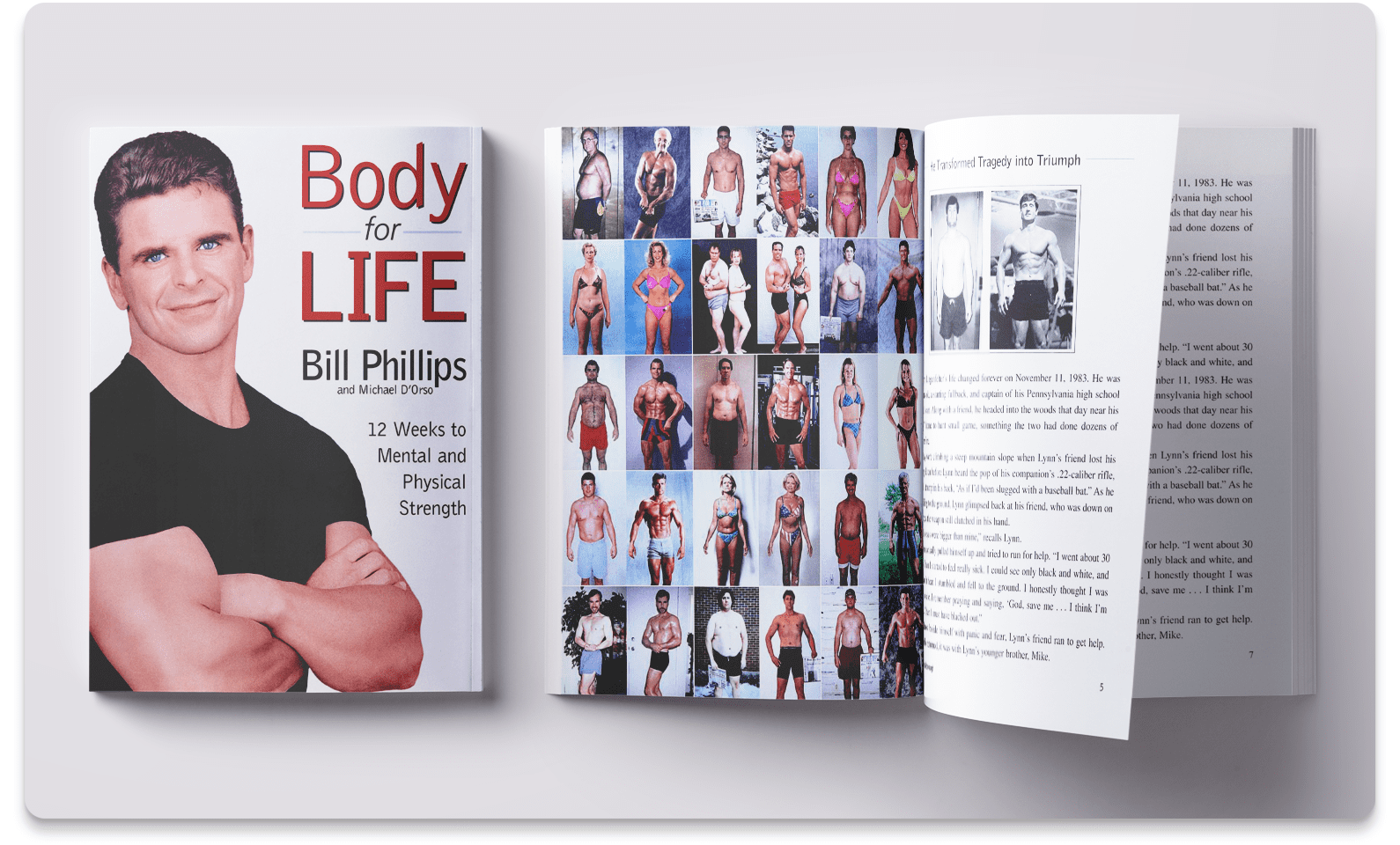
Phillips changed fitness when he popularized before/after photos for the masses.
Phillips’ work featured hundreds of side-by-side photos showing weight loss and muscle gain over a 12-week timeframe. These images reached millions of people and, suddenly, folks previously not interested in physique transformation began using Phillips’ workout, nutrition, and supplement ideas to change their own bodies.
While this might seem common practice nowadays, Phillips’ innovation was that he coupled evidence (photos of peoples’ bodies actually changing) with incentives (prize money, free cars, etc. for top performers) and made it all palatable for the masses (by showing a wide range of “average” bodies instead of just bodybuilders or fitness competitors).
Seeing his success, many professionals began using the same ideas.
Eventually nearly everyone started using them.
These days, side-by-side, underwear- or swimsuit-clad images are normal.
Your old high school physics lab partner is posting his 12-week transformation on Facebook, touting the cleanse that helped him lose 25 pounds.
Your sister-in-law is showing off the transformation photos she created (using a free app) on Instagram, documenting her 6-month, 40 pound weight loss.
No longer being used just to sell products, diets, or coaching services, the before and after photo has become a culturally accepted way to celebrate, even show off, body changes.
Yet it’s important to consider what’s being communicated with these images, and how they’re being received.
On the one hand, if your goal is to lose weight or gain muscle — to change your body — body change photos can be motivational. They can inspire you to get started, or keep going.
On the other hand, if you aren’t interested in either goal and/or have a history of disordered eating, trauma, or body images issues—they can be uninteresting, off putting, or downright triggering.
Now we arrive at the heart of the debate.
Some say before and after photos do more harm than good.
While publicly posted before and after photos work well for marketing products and services, some say their emphasis on leanness points to a bigger problem we’re grappling with as a culture.
To get some context, try this experiment, courtesy of my friend Molly Galbraith, co-founder of Girls Gone Strong.
Google the words “fit woman” or “fit man”.
What shows up in the search results?
For “fit woman”, you’ll see a collection of young, white, lean, lightly-muscled, traditionally “feminine” physiques. And abs. Lots of abs.
For men, you’ll see a group of young, white, lean, heavily-muscled, traditionally “masculine” physiques. (Plus, lots of abs here, too.)
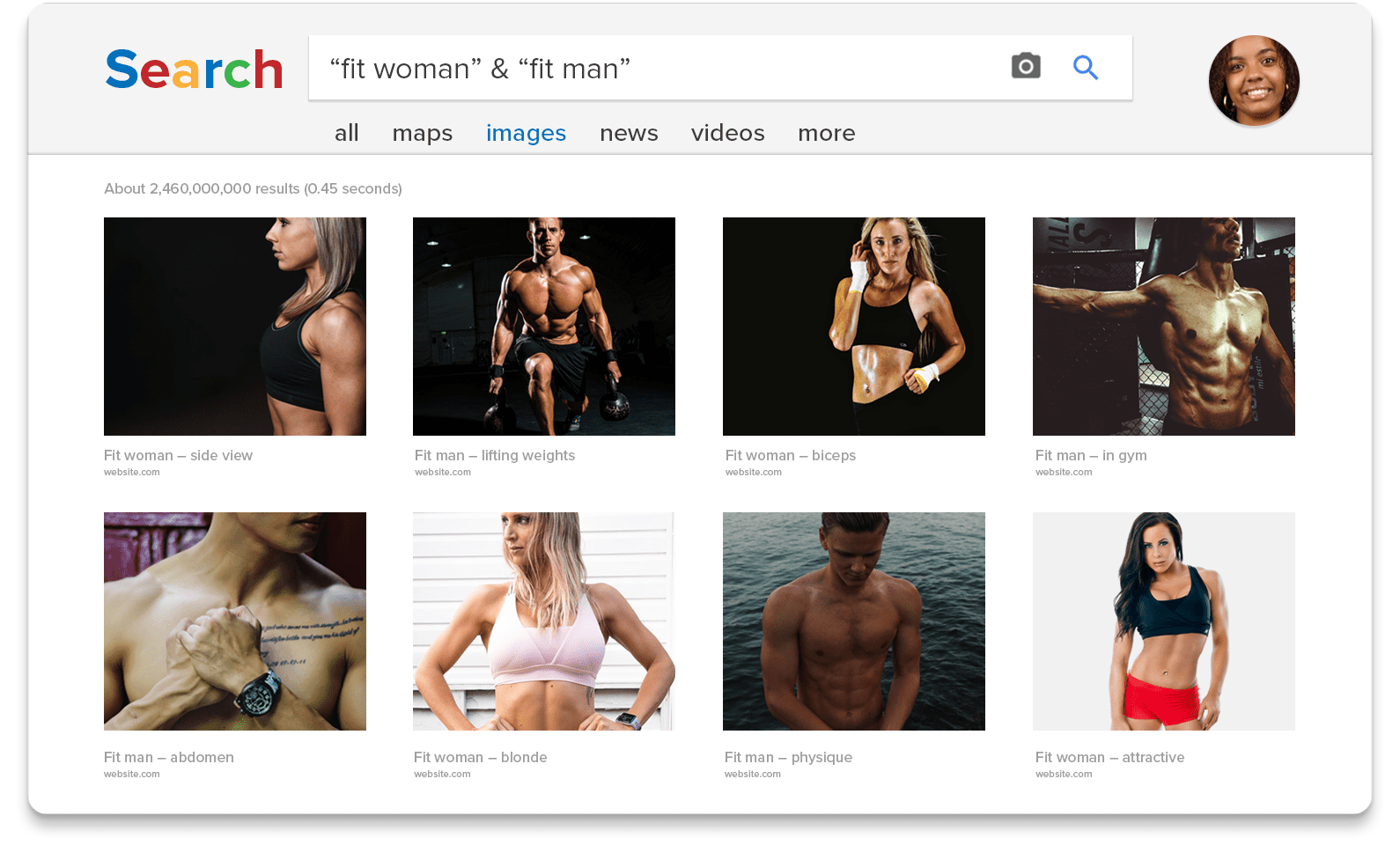
Fitness-related search results reinforce extreme and homogeneous ideals.
Why is that a problem?
Over time, our brains have been conditioned — through exposure to TV, movies, magazines, social media, and more — to associate bodies like these with the words “fit” and “healthy”.
But how might a 65-year-old who wants to get “fit and healthy” feel looking at stock images or before and after photos of young, highly conditioned, athletic people when he or she knows they can never look like them?
How about a postpartum mom in a larger body who wants to prioritize her health? And what if you’re in a larger body and you’re not white?
What if the “after” photo that everyone seems to promote as the “ideal” to celebrate… looks nothing like you and never will?
The more degrees you’re separated from the “ideal”, some argue, the less accessible “health and fitness” may seem.
Before and after photos invite comparison.
It’s natural to look at a stock image or a set of before and after photos and compare yourself to them. Especially if you notice some similarities between yourself and either the “before” or the “after”.
This phenomenon is known as social comparison — we look to others to get information about how to define ourselves.
Confronted with these transformation photos, it’s easy to see how we might use them to measure our own worthiness. We look at photos that celebrate leanness or thinness or muscularity and if we’re not as lean or thin or muscular we might think:
Hmmm, I don’t look like that. Is that okay? Am I okay?
Or…
This confirms what I suspected all along. My body needs to be leaner/more muscular/smaller in order to be celebrated.
Or simply…
Ugh. I look awful.
Body positivity, which has catapulted into global consciousness over the past decade, rejects this type of comparison. The body positivity movement is about loving your body no matter its shape, size, color, identity, or ability.
The body positive community was founded in support of those with marginalized bodies — ones that are differently sized, abled, colored, and gendered from what we have come to accept as the fit and healthy “norm”.
Which is why stock imagery and conventional before and after photos that promote a narrow range of “health” or “fitness” don’t really jibe with body positivity promoters.
Whether they actually do or not, conventional before and after photos seem to imply that:
- being leaner is always better than being fatter
- a thin body always deserves recognition over a fat one
- it’s not possible to be “manly” in a smaller body
- the only way to look feminine is to make your waist smaller, glutes bigger
- the “after” is better than the “before”
As a result, many people who consider themselves body positive — including some fitness pros — have serious reservations about publicly displaying before and after photos.
They can make “health” seem secondary.
The problem isn’t necessarily that many of these photos show a bigger person becoming smaller. The problem is that mainstream culture almost invariably conflates size with health.
While it’s true that there are some very good reasons to lose weight – we list five compelling, but little talked about, reasons here – that doesn’t necessarily mean people with bigger bodies can’t be healthy. But before and after photos presented with a singular standard can be misleading.
In reality, you don’t have to be young, super lean, or particularly ripped to be healthy. Bodies of all kinds of shapes, sizes, and abilities can…
…be strong and have good cardiovascular fitness.
…eat balanced diets that include nutritious whole foods.
…use mindful eating principles.
…be joyful, confident, and healthy.
But to some, before and after photos imply that it’s not possible to be healthy in a body that looks like the “before”. Instead, you must become the “after”. Otherwise, don’t bother.
They’re limited in the type of progress they show.
Before and after photos may show other types of progress through body language and facial expression, but they primarily track aesthetic progress.
Not everyone is interested in that. Body shape is just one indicator of change among many.
Placing too much focus on aesthetics, some argue, can cause people to lose sight of what really matters: Getting healthier (in a body, mind, and soul kind of way).
Fake photos are everywhere.
Photo manipulation is easier than ever before.
Not only has it become simple to tweak an image directly from your phone, but there are entire tutorials available online about how to fake a before and after transformation photo.
Tactics like adjusting body position, lighting, clothing, and even taking your “after” picture first are commonly used to achieve dramatic transformations that sometimes were taken just seconds apart.
Naturally, this makes people suspicious of images that seem “too good to be true”, especially since many of these photos are being used to help sell a product, diet, or coaching services.
Understandably, people start to discount transformation photos once they’ve seen a few too many fake ones.
On the other hand, there’s a reason before and after photos are still so popular.
Clearly, it’s not all bad—otherwise no one would be using these images anymore.
In a recent survey of nearly 1,000 health and fitness professionals, 90% said before and after pictures are still “a valuable tool that definitely have a place in the health and fitness industry if used appropriately” while only 10% said they’re “antiquated, do more harm than good, and should be avoided altogether”.
Indeed, most of the coaches in our community—and plenty of other health and fitness professionals—are still using them.
We believe there are some compelling reasons why.
They provide valuable data.
Photos are ultimately just another piece of data.
At PN, we use optional monthly photos as part of a larger set of measures (including subjective questionnaires and objective markers like weight, girths, blood work, etc) to see how clients are progressing.
When our distance-based coaches look at these photos, they’re not making moral or emotional judgments. Instead, they’re looking for little markers of change that tell them more about what’s happening inside their client’s body (physiologically, hormonally, etc).
Take that little area under your chin. It’s one of the places where fat loss shows the most. But you’re not going to measure it with a scale or a tape measure. Instead, you compare two side view photos to see how that chin in profile changes. Then, in combination with other methods, use that information to inform your coaching prescription.
The postural muscles from the back view are also a go-to spot to check out. Those muscles start to reveal themselves when there is a body composition change and when people start to engage them more (thanks to a strength-training routine).
In many cases, progress photos provide insight (for both coach and client) that’s hard to capture through other mediums. Especially in an online coaching environment.
They can build confidence and momentum.
We’ve established that not everyone is interested in visual progress. But lots of people are. And visuals can show us more than body composition changes.
According to our head women’s coach Jen Cooper, although taking the initial photos might be tough for some people, they can also show progress in unexpected ways.
Clients often notice that over time they’re smiling more in their progress photos. Standing taller with better posture. Radiating confidence and joy.
For some people, these small changes can be the first indicators that their effort is paying off. Indeed, photos can often change before any other metric — like weight, inches, or blood work. When this is the case, the photos become important for confidence and motivation.
Done right, they can inspire action.
Many of the people who find their way to Precision Nutrition view us as their “last chance” to get healthy and fit. They’ve tried countless methods before. None of them worked. Or they did work but didn’t last.
Now imagine you’re one of those people, looking for a coach to help you eat, move, and live better… for your last ever shot at improving your lifestyle, managing your health, and changing how your body looks.
There are thousands of websites, claims, and stories. Millions and millions of words. It’d take you forever to read and evaluate them all in the hopes of finding help.
But then, let’s say, you find your way to our men’s and women’s transformation hall of fame, where there are nearly 1,000 before and after pictures featuring people in their 20s and 30s, 40s and 50s, 60s and 70s; people with large bodies, small bodies, and everything in between; people with different skin colors; people from different parts of the world, and more. And you can scroll through them in a matter of minutes.
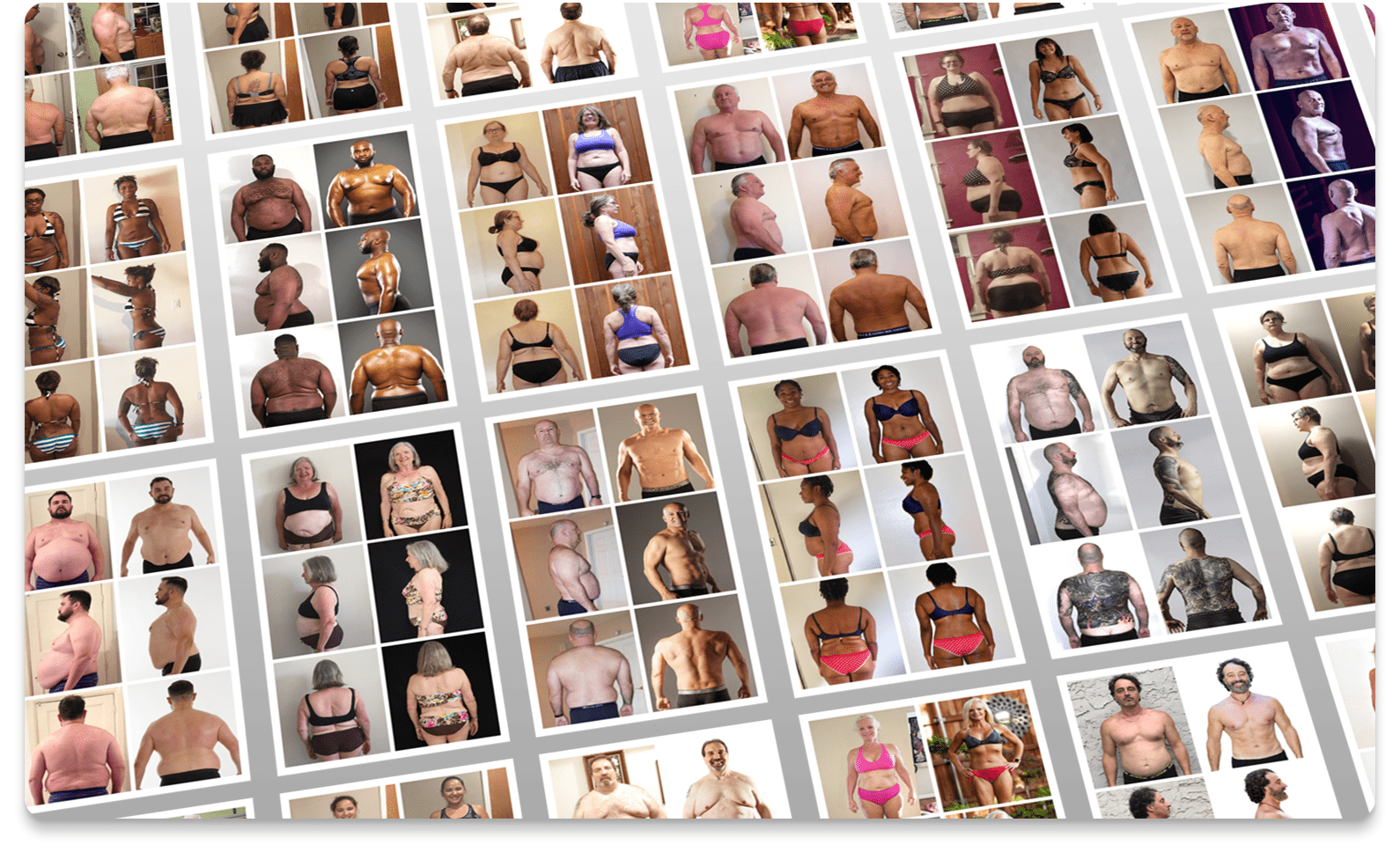
PN’s clients represent a wide array of backgrounds, bodies, and health goals.
What provides more compelling evidence or proof that a solution works? Neverending walls of words on your computer screen? Or 1,000 pictures telling 1,000 words each?
Let’s say you also discover that we have dozens of men’s and women’s stories showcasing a the journeys of people with different body sizes, ages, and ethnicities. Plus, that we also feature people doing interesting things they couldn’t before.
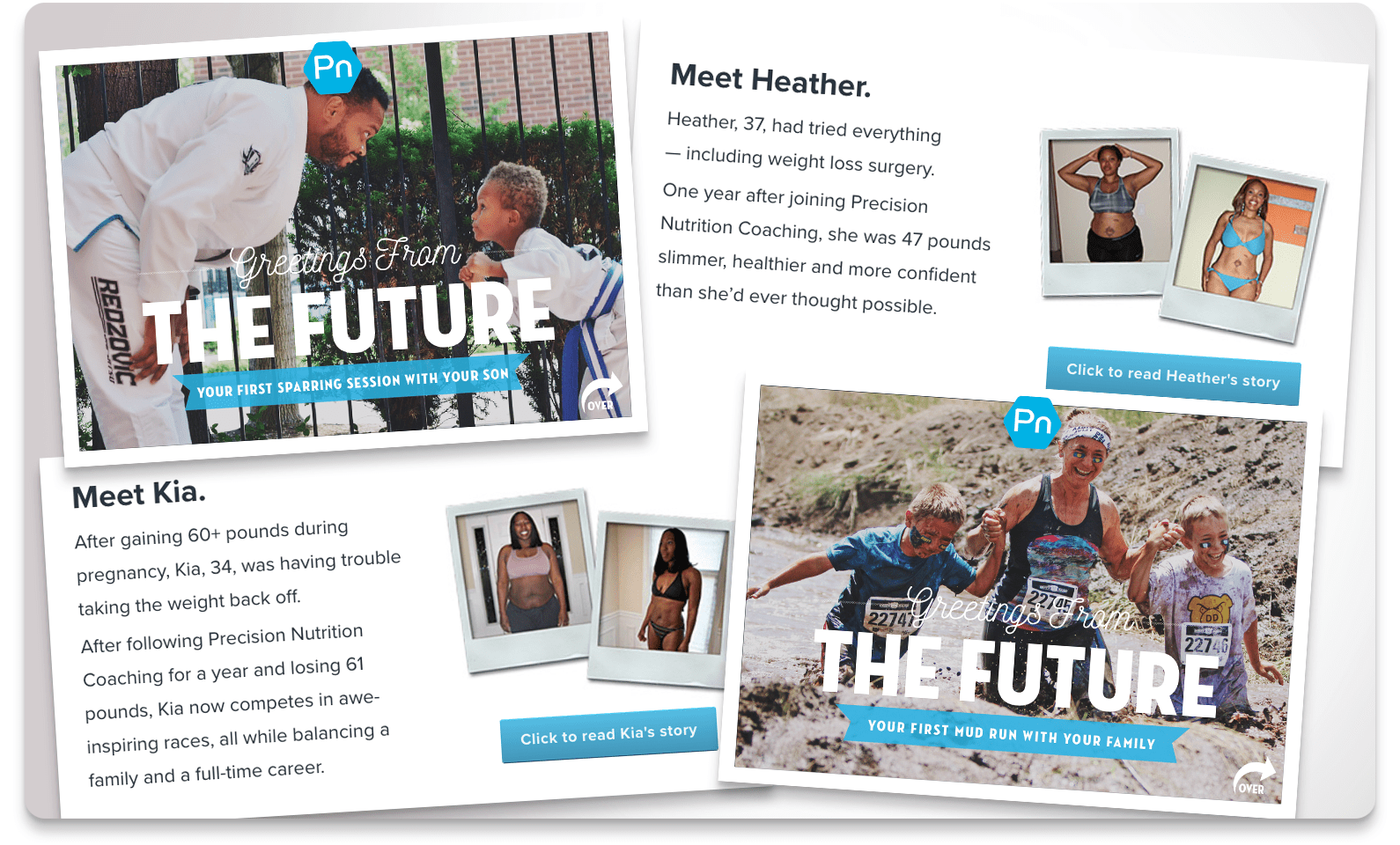
We celebrate the stories and achievements behind PN clients’ physical transformations.
This combination of before and after photos, client stories, and case studies inspires action. Many think this is exactly what people sitting on the fence need in order to kick-start an eat, move, and live better project. Without compelling evidence that something has worked for others like them, they may never reach out to get the help they need.
Which, I guess, isn’t so much an argument for before and after photos as it is for before and after photos plus other ways of demonstrating and celebrating progress.
Which leads me to…
5 best practices for using visual representation to mark progress.
Some people, especially those with weight loss or muscle gain goals, may find traditional before and after photos helpful in choosing products and services or in documenting their own progress.
But before and afters aren’t right for everyone — and that’s okay.
With the following practices, you can use transformation photos to document progress in a way that respects your (or your clients’) goals and needs.
Practice #1:
Make an informed choice about whether to use before and afters.
No one should be taking progress photos because they feel like they have to.
My friend Molly of Girls Gone Strong, is a prominent voice in body positive and size-friendly coaching. Her company still uses progress photos—with an important caveat.
“We lay out all the different options for clients and give the pros and cons of each. We’ll say a pro of before and after photos for aesthetic progress is that you have a clear picture of what your body looks like. A con is that for a lot of people, they bring up emotional distress.”
Once they’ve been informed about photos, girth measurements, scale weight, sleep tracking, and all the other measurement methods available to them, clients can make a decision about which methods to use.
Never require clients to pose for before and after photos, or grant you rights to their images, as a condition of your services.
By leading with a sense of autonomy and choice rather than obligation or shame, the subject of the photos is more likely to feel empowered by them.
Practice #2:
Acknowledge the journey, not just the end result.
Progress photos and before and after photos might sound like the same thing, but there’s an important distinction.
Before and after photos are about the comparison. You started there, and you ended up here.
But progress photos show a more realistic view of a health and fitness journey, because you’re taking photos frequently.

Precision Nutrition Coaching clients’ progress photos show marked but gradual change.
Change happens slowly, and progress photos document that. This can show people that although change may not look dramatic month-to-month, over the long-term (say, a year), change can look mind-blowing.
They can serve as a reminder that health isn’t always a linear journey, and that what happens along the way is just as important as the “after”.
Practice #3:
Consider that not all transformations are about weight loss or muscle gain.
Many transformation photos show bodies getting smaller or more muscular.
But we can use before and afters to show a lot of other types of transformations. Ones that have nothing to do with weight loss.
Some before and afters may show people getting healthy after beating cancer.
Maintaining their weight with a chronic illness.
Recovering from an eating disorder or major emotional trauma.
Becoming more themselves after gender correction surgery.
It’s easy to get locked into an idea of what “progress” means.
Explore the idea that even if weight loss isn’t your (or your client’s) goal, using photos to document the process could still be valuable. You just might have to use them differently.
Practice #4: Experiment with other visual formats.
If you don’t think traditional progress or before and after photos are right for you and/or your clients, try experimenting with other ways to use photography.
As coaching mastermind Dr. Krista Scott-Dixon puts it, photography can be a visual expression of an evolution — any evolution — whether it’s physical or psychological, tangible or abstract.
Take, for example, a recent ProCoach client, Jane.
Jane didn’t want to do a traditional “after” photo.
Her transformation was just as mental as it was physical.
For Jane, it used to be all about control. Now, she chooses to focus on the things that fill her with happiness rather than all the little details she can’t control.
In other words, she learned to have her cake and eat it too. That’s why she made her “after” photos based on Alice in Wonderland’s tea party.

Precision Nutrition Coaching clients are encouraged to represent their transformation in a way that is meaningful and unique to them.
The photos are visually stunning, but more importantly, they’re personally meaningful. Notice how they’re not about her body. They’re about her values, her creativity, and who she is as a person.
We’ve also encouraged clients to use photography to show what they can do rather than what they look like.
In a series called postcards from the future, clients marked their passage by highlighting something they never thought they’d be able to accomplish.
For one person, it was completing an Ironman.
For another, it was earning his first jiu jitsu belt at age 46.
Maybe you know that you don’t want to take photographs at all. Instead, you want to draw your progress.
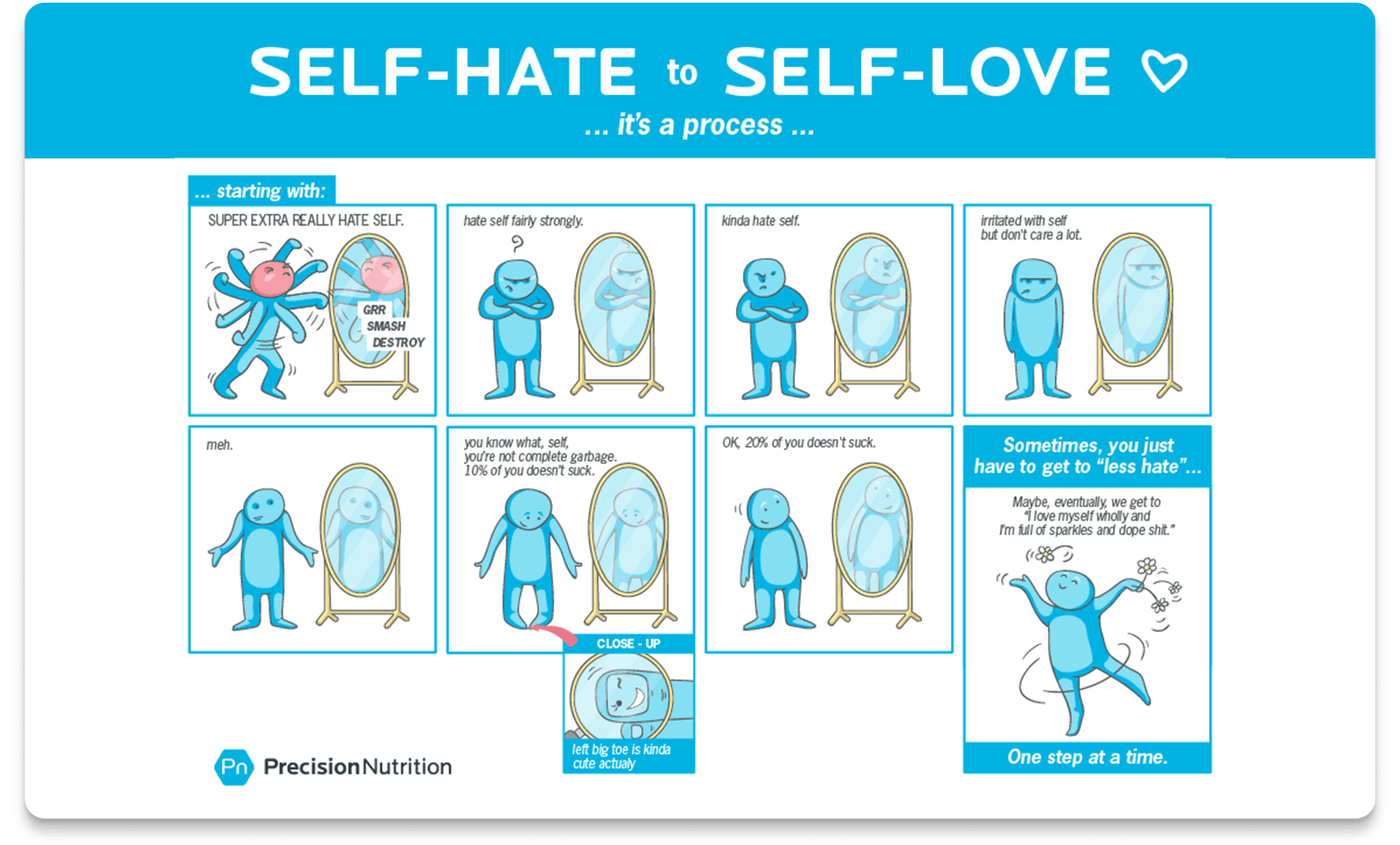
Written by Krista Scott-Dixon, illustrated by Alex Picot-Annand, adapted by Vige.co.
The bottom line?
There’s no “right” way to use visual representation in a health and fitness setting.
When traditional before and after photos aren’t a fit, encourage creativity.
Practice #5: Be open to the idea that your feelings may change.
Some people start out gung-ho about taking photos.
Later, their feelings are different.
They realize they’re checking for abs several times a day, or they just can’t kick the uncomfortable feelings they get when they look at photos of their body.
The opposite happens too.
Some start out violently opposed to taking starting-point photos.
Later, they wish they had.
The same goes for using these photos as a coach.
Perhaps you started out convinced before and afters were a bad idea, but over time, you realized their value as a meaningful documenter of change for your clients or as a way to convince people who don’t yet know you that you can help them change.
Or vice versa.
Maybe you were a staunch before and after advocate but changed your mind after seeing how your particular clients responded to them.
Sometimes philosophical positions change when faced with different evidence.
Experiment, and make it ok to change your mind.
What to do next:
Some tips from Precision Nutrition
This is an evolving debate, and however you feel about it is valid.
Here are some practical strategies to examine those feelings and decide whether before and after photos are right for you and/or your client base.
If you’re on your own health journey:
Be clear on your goals.
Know what type of change you want to make.
Are you hoping to get lean?
Get strong?
Feel better in your day-to-day life?
All of the above?
Consider how progress photos may (or may not) help you meet those goals.
Learn about all your options.
There are countless other tools that can provide useful data alongside progress photos.
Work on your own or with a coach to figure out how photos might compare with other progress markers like scale weight, girth measurements, body fat measurements, sleep metrics, blood tests, and more.
Understand your emotional reaction to before and after photos.
Do you see photos as data? Can you train yourself to look at images of your own body with compassion and curiosity? Cool. Taking progress photos could be a good option for you.
Does looking at photos of yourself bring up overwhelming body image issues? Does taking photos of yourself make you ultra-fixated on your appearance, to the point where you’re checking yourself out in the mirror all the time, looking for changes? Then maybe skip them.
Be open to changing.
Remember that the way you feel now may change. Just because progress photos didn’t work for you in the beginning of your journey doesn’t mean they won’t be useful later, and vice versa.
If you’re a coach:
Know your client base.
Are you working primarily with people who want to get shredded? Or are you more focused on helping busy parents figure out how to eat better when they have mile-long to-do lists?
Will posting swimsuit photos resonate with the clients you want to work with, or do you think they’ll respond better to images of diverse bodies in empowering poses?
Depending on your client base, before and after photos and their various iterations may or may not be a good fit in your marketing materials or as coaching tools.
Think about how photos and other methods of visual representation could uniquely benefit the population you work with, so when clients have questions about how to mark their progress, you have ideas.
Remember that every client is unique.
What worked for one person may not work for another. Some clients may not be open to before and afters. But don’t assume that because two clients have similar situations or goals, they’ll feel the same way about taking photos.
Educate your clients about their options.
Once you’re clear on your client’s goals, lay out all the progress-measuring options, along with their pros and cons. Present the information you have available, and empower them to decide.
Don’t make before and afters mandatory.
Keep in mind that swimsuit or underwear photos may not be compatible with some cultures and religions.
Plus, a good coach is cool about it when a client says no to something. Coaching isn’t about rules. Super coaches measure what matters to their clients. Your clients get to decide, so follow their lead.
If you’re a coach, or you want to be…
Learning how to coach clients, patients, friends, or family members through healthy eating and lifestyle changes is both an art and a science. If you’d like to learn more about both, consider the Precision Nutrition Level 1 Certification. The next group kicks off shortly.
What’s it all about?
The Precision Nutrition Level 1 Certification is the world’s most respected nutrition education program. It gives you the knowledge, systems, and tools you need to really understand how food influences a person’s health and fitness. Plus the ability to turn that knowledge into a thriving coaching practice.
Developed over 15 years, and proven with over 100,000 clients and patients, the Level 1 curriculum stands alone as the authority on the science of nutrition and the art of coaching.
Whether you’re already mid-career, or just starting out, the Level 1 Certification is your springboard to a deeper understanding of nutrition, the authority to coach it, and the ability to turn what you know into results.
[Of course, if you’re already a student or graduate of the Level 1 Certification, check out our Level 2 Certification Master Class. It’s an exclusive, year-long mentorship designed for elite professionals looking to master the art of coaching and be part of the top 1% of health and fitness coaches in the world.]
Interested? Add your name to the presale list. You’ll save up to 33% and secure your spot 24 hours before everyone else.
We’ll be opening up spots in our next Precision Nutrition Level 1 Certification on Wednesday, April 3rd, 2019.
If you want to find out more, we’ve set up the following presale list, which gives you two advantages.
- Pay less than everyone else. We like to reward people who are eager to boost their credentials and are ready to commit to getting the education they need. So we’re offering a discount of up to 33% off the general price when you sign up for the presale list.
- Sign up 24 hours before the general public and increase your chances of getting a spot. We only open the certification program twice per year. Due to high demand, spots in the program are limited and have historically sold out in a matter of hours. But when you sign up for the presale list, we’ll give you the opportunity to register a full 24 hours before anyone else.
If you’re ready for a deeper understanding of nutrition, the authority to coach it, and the ability to turn what you know into results… this is your chance to see what the world’s top professional nutrition coaching system can do for you.
The post Before and after photos: Inspirational and effective OR demoralizing and unethical? appeared first on Precision Nutrition.
from Blog – Precision Nutrition https://www.precisionnutrition.com/before-and-after-photos
via
Holistic Clients

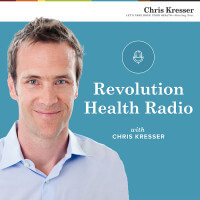
 These sweet potato hash browns are the perfect addition to any healthy meal. You can serve them as a side to any breakfast or substitute them in any of your favorite hash brown recipes. All you need is a sturdy cheese grater and a few large sweet potatoes and you ...
These sweet potato hash browns are the perfect addition to any healthy meal. You can serve them as a side to any breakfast or substitute them in any of your favorite hash brown recipes. All you need is a sturdy cheese grater and a few large sweet potatoes and you ... These Cheddar Sweet Potato Hash Browns Fritters are a fun twist off the traditional sweet potato latkes. Made with a base of grated sweet potatoes, sharp cheddar cheese and just the perfect blend of spices. These are delicious any time of day or night! Happy Monday my friends! It was ...
These Cheddar Sweet Potato Hash Browns Fritters are a fun twist off the traditional sweet potato latkes. Made with a base of grated sweet potatoes, sharp cheddar cheese and just the perfect blend of spices. These are delicious any time of day or night! Happy Monday my friends! It was ...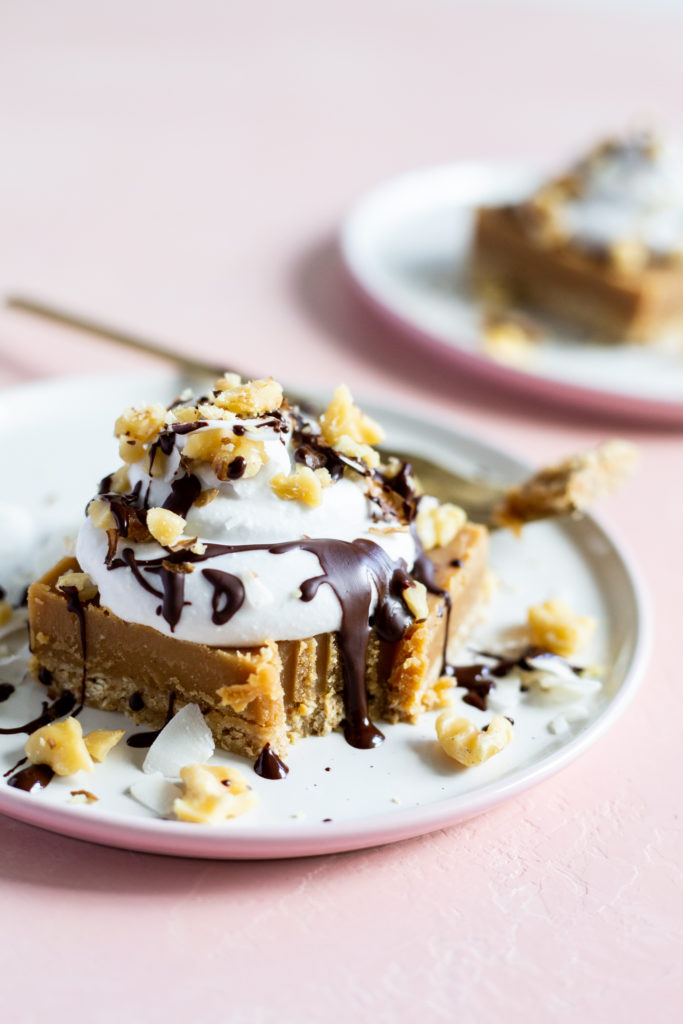

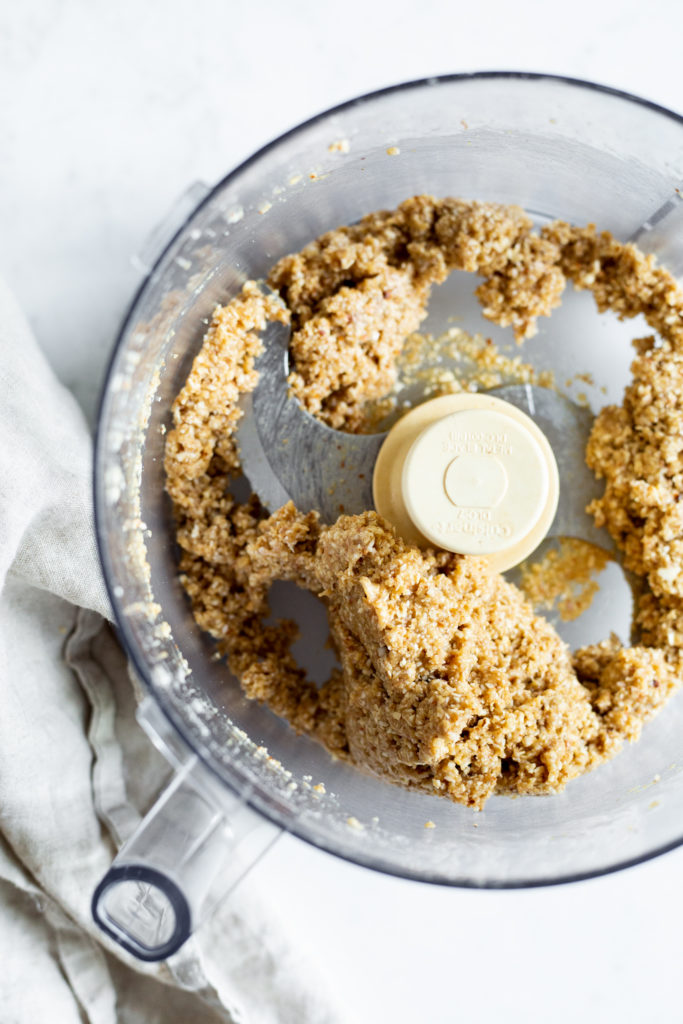
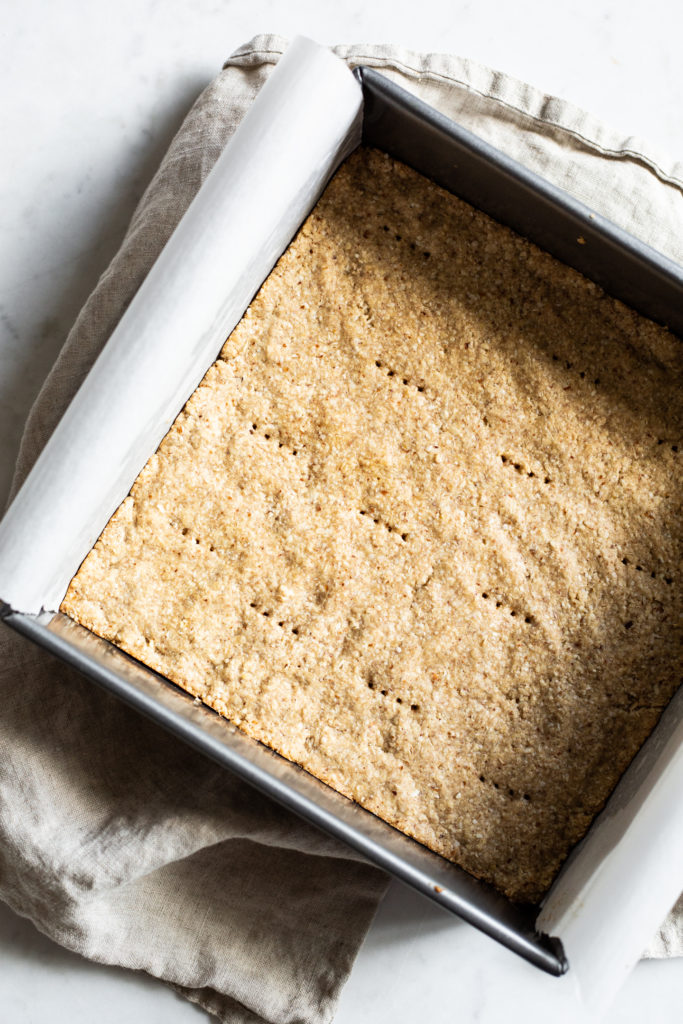
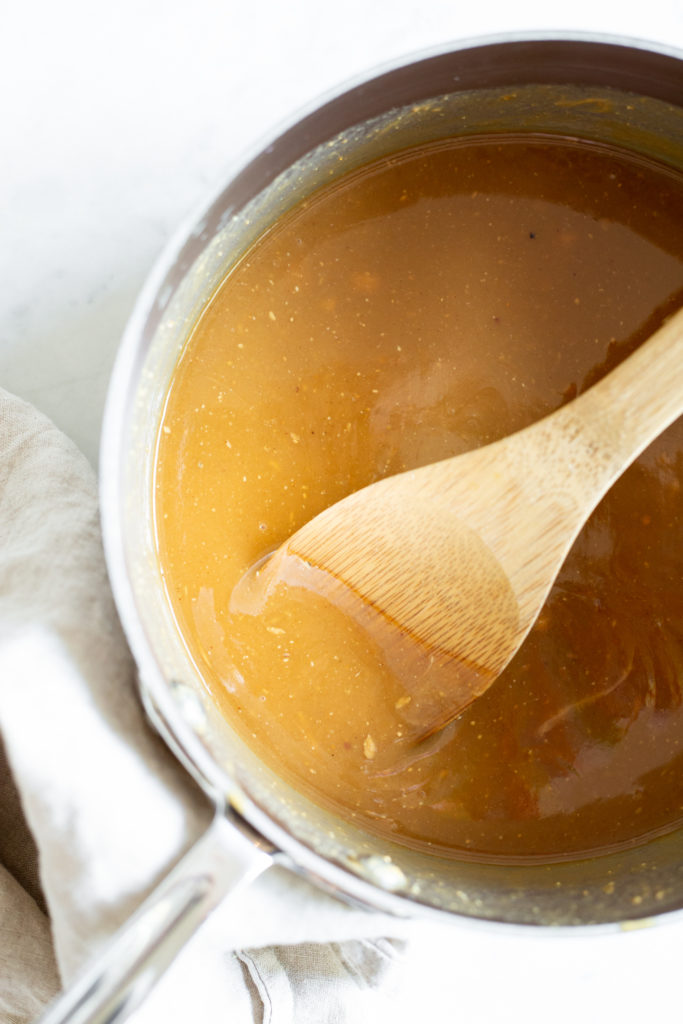
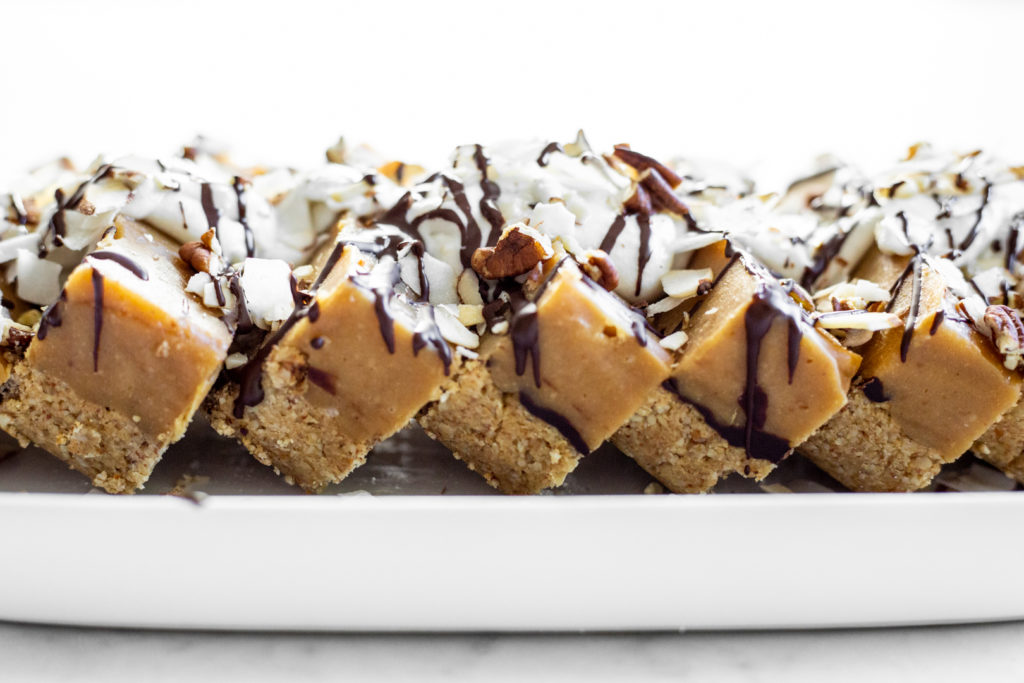

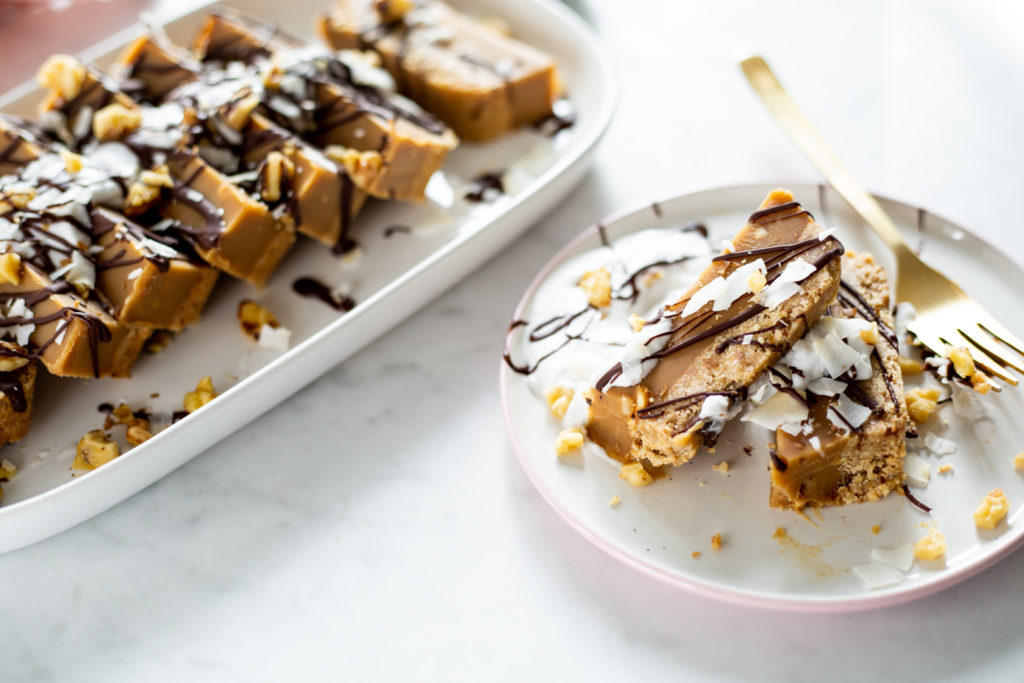




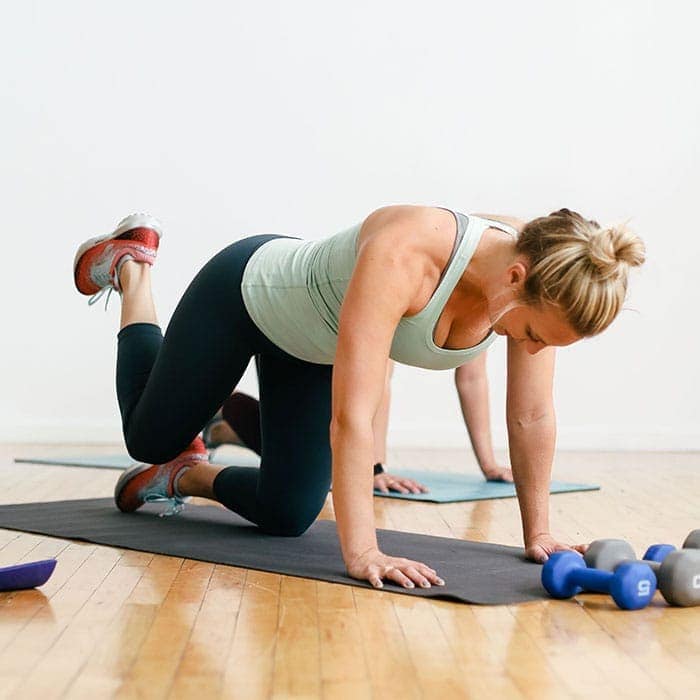 Get ready to sweat with this booty workout! You can use your body weight or you can add some dumbbells! Get your cardio fix and a great butt workout in under 45 minutes. It is a perfect workout for leg day or if you have a short amount of time ...
Get ready to sweat with this booty workout! You can use your body weight or you can add some dumbbells! Get your cardio fix and a great butt workout in under 45 minutes. It is a perfect workout for leg day or if you have a short amount of time ...